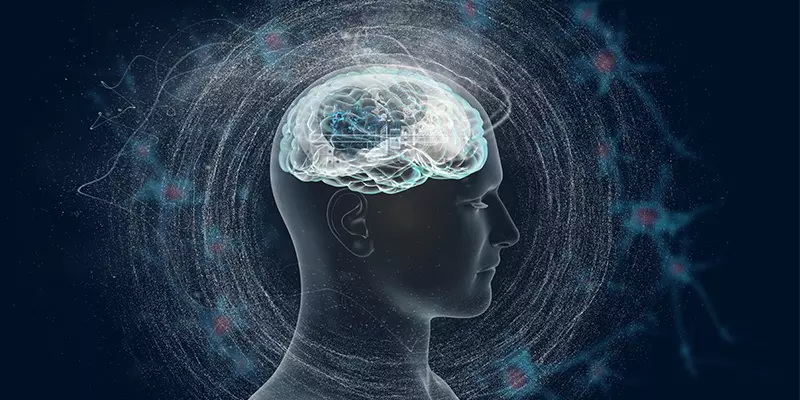
Content updated from previous publish date.
Are you one of those people who can’t resist ordering dessert when the restaurant staff brings the dessert tray to your table? Do you get intense urges to snack on something sweet or salty when the clock hits 3 p.m.? Do you reflexively grab a candy bar while in the checkout line at the grocery store? Why is it so hard for some of us to resist cravings? It depends on how your brain functions.
Low blood sugar levels can make you feel hungry, irritable, or anxious—all of which make you more likely to make poor food choices. Click To Tweet
CRAVINGS AND THE BRAIN
Cravings involve several brain circuits and neurotransmitters, including:
- Prefrontal cortex (PFC): The PFC acts as the brain’s brake and is involved in impulse control and judgment. When it is healthy, it helps you say no to the cookies, chips, or candy that is calling out to you.
- Pleasure and reward centers: This brain region, called the nucleus accumbens, provides the passion and motivation to drive behavior. When activity in this region is balanced, it helps you choose the apple instead of the apple pie. When the pleasure centers are worn out from overuse, it makes you want more sugary, fatty concoctions.
- Emotional centers: The deep limbic system ties emotional memories to foods and can increase the value of certain foods that are linked to good memories.
- Dopamine: Eating triggers the release of dopamine, which is involved in motivation and salience. Consuming sweet, salty, scrumptious snacks increases the amount of dopamine released.
When activity in the PFC is healthy, these brain systems and neurotransmitters work together to help you fight off cravings. However, if there is low activity in the PFC, it can allow the pleasure and emotional centers to hijack your brain and drive you to cave to cravings. If you routinely give in to your urges to snack on unhealthy fare, you can learn to fight back and regain control of your brain with the following 5 tips.
5 BRAIN-BASED TIPS TO CONQUER CRAVINGS
1. Keep your blood sugar balanced.
Low blood sugar levels are associated with lower overall brain activity, including lower activity in the prefrontal cortex (PFC), the brain’s brake. Low brain activity here means more cravings and more bad decisions. Low blood sugar levels can make you feel hungry, irritable, or anxious—all of which make you more likely to make poor food choices. A study in the Journal of Personality and Social Psychology outlines the critical nature of blood sugar levels and self-control. They write that self-control failures are more likely to occur when glucose is low. Restoring glucose to a sufficient level typically improves impulse control.
Conquer Cravings: To balance blood sugar levels, eat smaller meals with protein throughout the day. In addition, avoid alcohol because it reduces glucose throughout the brain and body and impairs many forms of self-control.
2. Decrease consumption of artificial sweeteners.
If you really want to decrease your cravings, you must get rid of the artificial sweeteners in your diet. You may think of these sweeteners as “free” because they have no calories, but they can be up to 600 times sweeter than sugar, which means they may activate the appetite centers of the brain making you crave even more food and more sugar.
Conquer Cravings: Ditch the diet sodas that are full of artificial sweeteners and stick with water infused with lemons, limes, or cucumbers. In addition, eliminate packaged sugar-free snacks, yogurt, and other fare that are usually made with artificial sweeteners and other no-good-for-you stuff.
3. Manage your stress.
Chronic stress has been associated with increased appetite and cravings for sugary, fatty fare. It is also linked to abdominal obesity, low energy, poor concentration, elevated cholesterol levels, heart disease, and hypertension, as well as an increased risk for anxiety and depression.
Conquer Cravings: To decrease your cravings, get on a daily stress-management program that includes meditation or prayer, deep-breathing exercises, and calming supplements (such as GABA and magnesium).
4. Get moving.
Scientific research has found that physical activity can cut cravings whether you crave sugary or salty snacks. A study in the journal Appetite showed that cravings for chocolate decreased following a 15-minute brisk walk. And findings from a 2022 animal study show that acute high-intensity interval training curbs cravings for high-fat foods. In this study, rats on a month-long diet that did intense exercise were better able to resist cues for yummy high-fat food pellets. Think of it as the equivalent of being able to drive past a doughnut shop or pizza parlor without being tempted to pull the car over and indulge.
Conquer Cravings: Instead of immediately giving in to your cravings or focusing on how much you want something, get moving if possible. Go for a brisk walk outside. And consider starting an exercise routine that includes high-intensity interval training. However, be sure to check with your physician before starting any exercise program.
5. Get adequate sleep.
Have you ever noticed that after a night with almost no sleep, you wake up ravenously hungry and want to eat anything and everything in sight? That is because lack of sleep increases food cravings. Research shows that lack of sleep causes changes in the brain associated with an increased desire for high-calorie foods. An expanding body of scientific evidence has shown that the less sleep you get, the more cravings you have, the more calories you eat, the more belly fat you have, and the higher your BMI.
Conquer Cravings: Make sleep a priority and aim for 7-8 hours each night. If you have trouble sleeping, develop a nightly routine that promotes rest. For example, turn off all tech devices at least an hour before bedtime, sip a cup of warm chamomile tea, and consider supplements such as melatonin, magnesium, GABA, l-theanine, 5-HTP, and vitamin B6.
CALMING CRAVINGS
With these tips, you can learn to calm cravings. The more times you say no to them, the easier it will become to resist the temptation to give in.
Anxiety, depression, and other mental health issues can’t wait. At Amen Clinics, we’re here for you. We offer in-clinic brain scanning and appointments, as well as mental telehealth, clinical evaluations, and therapy for adults, teens, children, and couples. Find out more by speaking to a specialist today at 888-288-9834 or visit our contact page here.





Your Information is so very helpful.
Comment by Sherrell Leary — June 10, 2018 @ 8:27 AM
Food for thought…..interesting to learn about artificial sweeteners. Although I have avoided them for years, I can see, with their sweetening level how that could throw someone off. Later at night, if something emotionally upsetting happens, I am tempted to eat. Just need to avoid talking to people on the phone before I go to sleep….or at least the people who provoke my emotions.
Comment by Sharlene E Sivertson — May 15, 2023 @ 3:08 AM
How do I avoid night cravings especially after dinner?
Comment by Joanne — May 15, 2023 @ 8:50 AM
very helpful information!
Comment by douglas morris — May 18, 2023 @ 4:40 PM
Wondering if "Artificial Sweeteners" also includes natrual zero calorie sweeteners such as Stevia? Would that not also activate appetite centers of the brain?
Comment by Mira — September 15, 2023 @ 2:23 PM